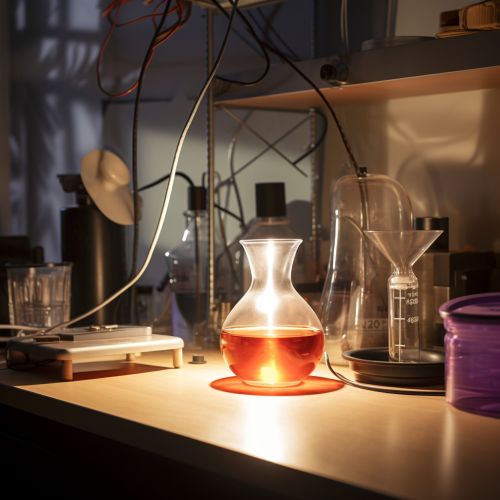Photocatalysis in Environmental Cleanup
Introduction
Photocatalysis is a process that uses light to accelerate a reaction which degrades pollutants in the environment. This process has gained significant attention in the field of environmental science and chemical engineering due to its potential in the remediation of various environmental pollutants. The process involves the use of a photocatalyst, which when exposed to light, can induce a chemical reaction without being consumed or undergoing any permanent transformation.


Principles of Photocatalysis
The principle of photocatalysis involves the absorption of light by a photocatalyst, which excites an electron from the valence band to the conduction band, creating an electron-hole pair. This electron-hole pair then participates in redox reactions, leading to the degradation of pollutants. The efficiency of photocatalysis is determined by the ability of the photocatalyst to generate and maintain these electron-hole pairs.
Types of Photocatalysis
Photocatalysis can be broadly classified into two types: homogeneous photocatalysis and heterogeneous photocatalysis. In homogeneous photocatalysis, the photocatalyst exists in the same phase as the reactants, while in heterogeneous photocatalysis, the photocatalyst is in a different phase from the reactants.
Homogeneous Photocatalysis
In homogeneous photocatalysis, the photocatalyst and the reactants are in the same phase, typically in a liquid solution. This allows for a direct interaction between the reactants and the photocatalyst, leading to a high reaction rate. However, the major drawback of this process is the difficulty in separating the photocatalyst from the reaction mixture after the reaction.
Heterogeneous Photocatalysis
In heterogeneous photocatalysis, the photocatalyst is in a different phase from the reactants. The most common form of heterogeneous photocatalysis is solid-liquid photocatalysis, where the photocatalyst is a solid and the reactants are in a liquid phase. This process has the advantage of easy separation of the photocatalyst after the reaction, making it more suitable for practical applications.
Photocatalysts
Photocatalysts are materials that can absorb light and induce a chemical reaction. The most commonly used photocatalyst is titanium dioxide (TiO2), due to its high photocatalytic activity, non-toxicity, and stability. Other photocatalysts include zinc oxide (ZnO), cadmium sulfide (CdS), and tungsten trioxide (WO3).
Applications of Photocatalysis in Environmental Cleanup
Photocatalysis has been widely used in various environmental cleanup applications, including water purification, air purification, and soil remediation.
Water Purification
Photocatalysis has been extensively used in the purification of water, where it can degrade a wide range of pollutants, including organic compounds, heavy metals, and microorganisms. The process involves the irradiation of a photocatalyst in the presence of the pollutants, leading to their degradation.
Air Purification
Photocatalysis can also be used in the purification of air, where it can degrade volatile organic compounds (VOCs) and other air pollutants. This is typically achieved by coating a surface with a photocatalyst, which when exposed to light, can degrade the pollutants in the air.
Soil Remediation
Photocatalysis can also be used in the remediation of contaminated soil. The process involves the application of a photocatalyst to the soil, which when irradiated with light, can degrade the pollutants in the soil.
Challenges and Future Directions
Despite the potential of photocatalysis in environmental cleanup, there are several challenges that need to be addressed. These include the low efficiency of photocatalysts under visible light, the recombination of electron-hole pairs, and the stability of photocatalysts. Future research in this field is expected to focus on the development of new photocatalysts with enhanced activity, the design of photocatalytic reactors, and the integration of photocatalysis with other treatment processes.
